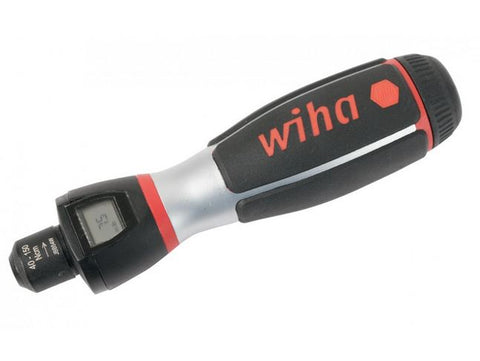It’s a good bet that most if not all mechanics, DIYers and handymen are incapable of applying the correct amount of torque when turning a bolt, nut or other fastener. Many of these tool users probably think they can, but an informal study performed by a motorcycle enthusiast proved that in a majority of the cases the fastener was under-torqued although the mechanic had “felt” it was at the right torque. In motorcycle maintenance, and in fact probably many other instances, it’s important to make sure the exact right amount of torque is used. Failure to do so can either cause a lack of support under strain for an under torqued fastener and breakage for something that is over torqued. Makes you wonder how the world worked prior to the torque wrench, so where exactly did the torque wrench come from?
 The story of the torque wrench, which has recently celebrated its 100th anniversary is pretty much as follows. A man named Conrad Bahr was working for the New York City water department and apparently found that most if, if not all, of the fasteners were either too tight or too loose and therefore caused leaks and probably other issues. How he figured out and designed the first torque wrench is a mystery, but it’s actually relatively easy to make one yourself, though with the effort involved you might as well just buy one. But if you can Macguyver your own together, you do get some great Red Green or Tim Taylor “manliness points” which no one can assign a real value to. However he did it, Bahr’s invention made it so that every worker was able to tighten the fasteners to the same exact setting every time no matter how strong or how weak they were. This level of consistency made it possible for better design of future projects and probably helped shape the modern world more than we can imagine.
The story of the torque wrench, which has recently celebrated its 100th anniversary is pretty much as follows. A man named Conrad Bahr was working for the New York City water department and apparently found that most if, if not all, of the fasteners were either too tight or too loose and therefore caused leaks and probably other issues. How he figured out and designed the first torque wrench is a mystery, but it’s actually relatively easy to make one yourself, though with the effort involved you might as well just buy one. But if you can Macguyver your own together, you do get some great Red Green or Tim Taylor “manliness points” which no one can assign a real value to. However he did it, Bahr’s invention made it so that every worker was able to tighten the fasteners to the same exact setting every time no matter how strong or how weak they were. This level of consistency made it possible for better design of future projects and probably helped shape the modern world more than we can imagine.
Although the torque wrench was invented in 1918, it didn’t really spread until about 1938 when Chrysler developed the beam torque wrench and licensed it to a small company to manufacture. This company, now Sturtevant Richmont, was incorporated in 1940 and made huge innovations in the torque industry. The beam type torque wrench was perfected and was the primary torque wrench for a while, however as we have seen with many other tools like the hammer and screwdriver, the torque wrench has undergone many changes and many variations have come from that.
 Aside from the standard beam torque wrench, you can get a deflecting beam which applies the torque to another beam instead of using a coil spring. This is supposed to keep the tool accurate for a longer time. The slipper torque uses a roller and cam mechanism which locks into place at a specific torque value. The click torque is slightly more complex in its operation. Basically, the internal mechanism causes a click when the torque is reached and the whole operations is said to be more precise and has the added benefit of a "feel" and a sound that indicate the load has been reached. In addition to these manual style torque wrenches, there are various types of electronic torque wrenches which are often used when documentation and quality assurance purposes. There are also hydraulic torque wrenches for when large torque and accuracy are needed.
Aside from the standard beam torque wrench, you can get a deflecting beam which applies the torque to another beam instead of using a coil spring. This is supposed to keep the tool accurate for a longer time. The slipper torque uses a roller and cam mechanism which locks into place at a specific torque value. The click torque is slightly more complex in its operation. Basically, the internal mechanism causes a click when the torque is reached and the whole operations is said to be more precise and has the added benefit of a "feel" and a sound that indicate the load has been reached. In addition to these manual style torque wrenches, there are various types of electronic torque wrenches which are often used when documentation and quality assurance purposes. There are also hydraulic torque wrenches for when large torque and accuracy are needed.
With the variety of torque wrenches available, it’s hard to choose the right one. However, whichever one you do get it’s going to help you ensure that your fastener is tightened just the right amount. Whether you work on bikes, cars or motorcycles or any number of other types of jobs that need a precise fit getting a torque wrench will make sure nothing you fasten is over or under torqued.
























Leave a comment